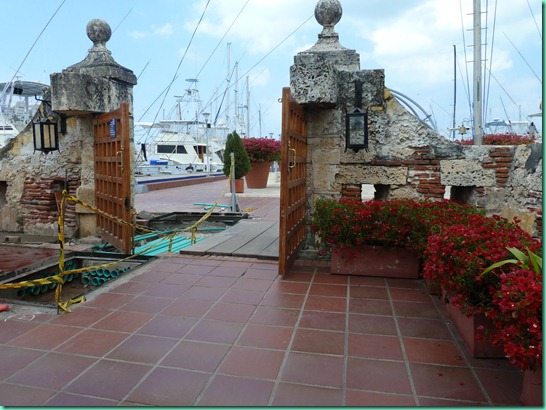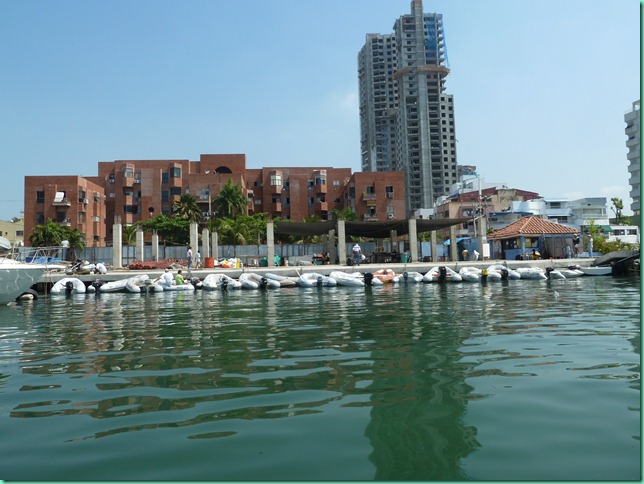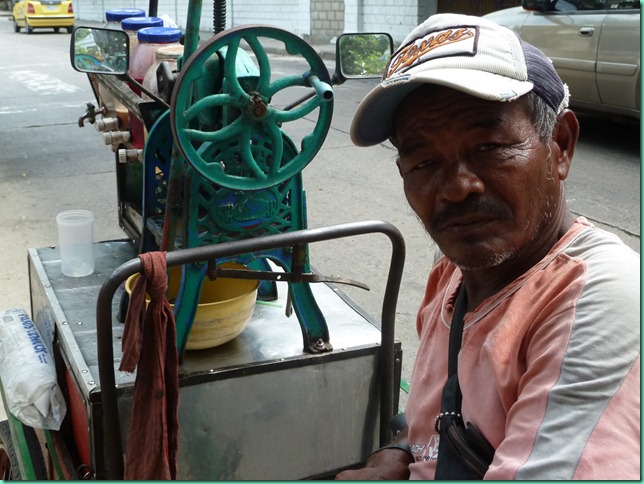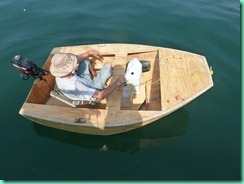Depending on how you do it, it’s an overnight trip from Cartagena to the San Blas islands which are sprinkled along Panama’s Caribbean coast. As an almost 200-mile straight shot,it’s usually a fast trip on the rhumbline, tradewinds generally strong at your back. The problem, sometimes, are the short, steep (2-3 meter ) seas that have been building underneath those trades. And, of course, keeping in mind the chart notation “unsurveyed”, you need daylight to see the numerous reefs and shoals on the approach.
We took an alternate route, coast-hopping thru a series of small islands off the coast of southwestern Colombia. The Bay of Cholon behind Isla Baru twenty miles south of Cartagena is a fine and commodious anchorage, and a haven for wealthy Colombians. Baru also has a beautiful stretch of beach being eyed by developers. Across the island the pueblo of Baru is something different, a ramshackle, dirt-floored town that must be a bog in the rainy season.
Eventually we moved on to the Rosarios, where there’s a very interesting private aviary. The resident veterinarian told us many of the birds had been confiscated from bird traffickers. I was really impressed by the care taken. Otherwise, there were a surprising number of roofless, abandoned houses, which made us wonder if there had ever been a hurricane in this ‘hurricane-free’ latitude. There’s also an aquarium that is the daytrip destination of many Cartagena tourists and cruise ship passengers.
The Islas San Bernardos have a resort on one island, and a tiny crowded island nearby where everyone lives, and a big mainly empty island that we anchored behind. We also spent a night behind Cabo San Bernardo, where there was surprisingly little activity of any kind. We did get a late evening visit and inspection from a stealthy Colombian Coast Guard boat, which was at first very unsettling, but upon further reflection, it was nice to know they were out there. Just another reminder of all that goes on beyond us.
At Isla Fuerte, we spent an extra day criss-crossing its shady paths trying not too hard to figure out what required armed soldiers on the waterfront, and more Coast Guard activity. Maybe it had to do with a hydrographic ship anchored on the back side of the island. Fuerte seemed a nice small place despite the rolly anchorage. The local joke was that there were more burros than people. I don’t think that was true, but there were lots of burros, carrying buckets of water from the well, coral blocks for building from the beach, bunches of plantains or bags of coconuts from the hinterland. We were offered a plot of land ‘muy barato’ where we could build a refuge from the Estados Unidos, which our new friend would look after in our absence from the comfort of his hammock.
The next afternoon we left, planning for a morning arrival on the mainland. If there’s life in this belly of ocean, we didn’t see it, which is good because, although the Colombia we saw is an impressive country in many respects, there are still hostage-takers and drug-runners, political unrest and corruption, all of which find their way into coastal waters, at least according to Jackline Insurance.
Our landfall was Puerto Escoses, Panama, 8-49 degrees N and 77-37 W. Ghosts live here. Some hang out in the empty Kuna Indian houses halfway down the bay, perhaps waiting for the next planting season or coconut harvest. The others are several thousand Scotsmen (and women, I assume), who attempted to settle here back in 1690. What were they thinking?
Just as we were thinking we had the place to ourselves, a cayuga eased over the bar of a small river hidden in the mangroves. Two Kuna boys and a man not Kuna approached us wanting to know our particulars, why we had not gone to the official port of Obaldia (an open roadstead) and, most particularly, where was our Panamanian flag? In fact we were picking through our bag of flags trying to remember which quartered red/white/blue with star flag represented Panama, and which side went up. As he left he told us we were lucky he was not in his official boat, and that he could not give us permission to explore the river as it was not his jurisdiction. The two crocodiles that swam past the boat later on, as the sun went down, my length although not my beam, made me glad I’d stayed in the boat all day. So, welcome to Panama.






![P1010122-Cartagena-from-Club-Nautico[2] P1010122-Cartagena-from-Club-Nautico[2]](http://lh4.ggpht.com/_ez6anYPO9Yo/TXId2eWwBiI/AAAAAAAAAaQ/xAprYilEqMw/P1010122-Cartagena-from-Club-Nautico%5B2%5D.jpg?imgmax=800)